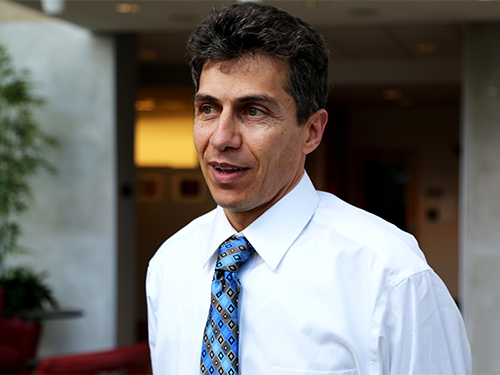New peer-reviewed research from the Heller School’s Schneider Institutes for Health Policy and Research demonstrates that, prior to implementation of the Affordable Care Act, primary care provided by nurse practitioners (NPs) is up to 34% less costly than care provided by physicians. The study, published online ahead of print in Medical Care, offers important evidence about the value of NP-provided health care (the journal is published by Wolters Kluwer).
The U.S. faces a primary care shortage and physicians alone cannot address growing needs. As evidence mounts demonstrating the quality and cost-effectiveness of NP-provided primary care, government payers, insurers and health care policy makers increasingly support the greater use of NPs to alleviate the shortage.
“Physicians prescribe more than NPs, they charge more, and exercise their discretion in utilizing more of the expensive, gold-plated, hence less cost-effective technologies,” says lead author and Heller Scientist, Moaven Razavi.
The cost gap between NPs and MDs is biggest for low-risk patients, at 34%, and smallest for high-risk patients, at 21%. “Low-risk patients are where primary care providers have the most discretion, and that’s where NPs really shine,” says study coauthor Jennifer Perloff, director of the Heller School’s Institute on Healthcare Systems. The study found that NPs who treat patients with more severe health conditions order more tests and treatments, similar to physicians, but still not to the same degree.
According to Montana State University professor, health economist and coauthor Peter Buerhaus, this means that, “NPs are adjusting their treatments to meet patient needs arising from low- to high-risk conditions and using resources that meaningfully benefit patients wherever they fall on the illness continuum, which is the style of practice that health care providers need to adopt to slow the growth of health care costs.”
To get at the cost drivers from the administrative claims data, Razavi adapted a method widely used by economists to study inflation trends over time. This method organizes the drivers of costs into price, volume and choice of consumption. “Here at Brandeis, we repurposed a method that we can use again and again to look at cost increases cross-sectionally in different styles of health care, or different groups of providers,” says Perloff.
“To simplify,” says Razavi, “If a physician’s total cost to treat a hypothetical low-risk patient is $1,340, the NP can manage that patient with as low as $1,000. Of that $340 difference, $60 comes from NPs’ contracts being cheaper, $40 is from prescribing less expensive drugs and technologies, and $240 is from ordering fewer services, like imaging or tests, and avoiding redundant services.”
The paper is coauthored by Boston College, Connell School of Nursing assistant professor and nurse practitioner Monica O’Reilly-Jacob, PhD’18. She notes that these results highlight that states and health care systems that restrict NP scope of practice with outdated laws and policies are missing out on cost-savings opportunities. Among the many proposals to bend the health care spending curve, optimal use of the NP workforce is truly low-hanging fruit.


